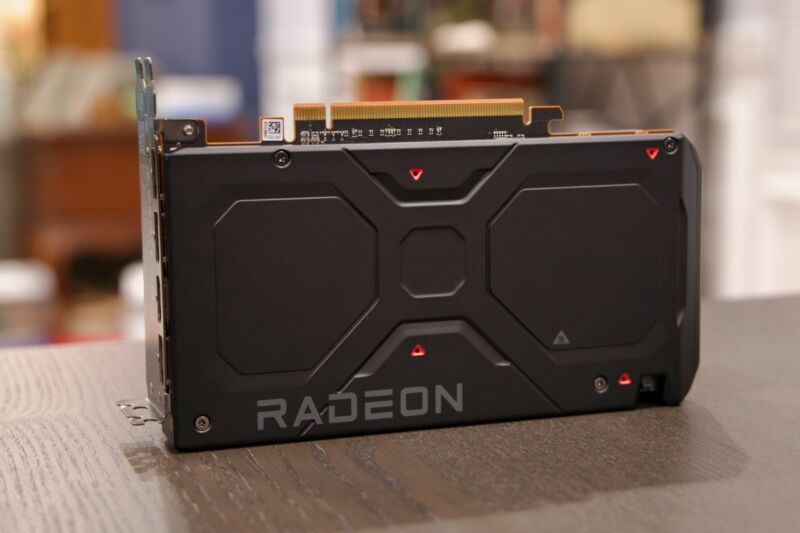
Enlarge / AMD's Radeon RX 7600. (credit: Andrew Cunningham)
Earlier this month, AMD briefed the press on its first mainstream RX 7000-series card, the RX 7600. A mostly incremental upgrade over the original RX 6600 but with many of the new features from the RX 7900 XTX and XT, it would come with a price cut, from the RX 6600's $329 to $299. Nvidia then briefed the press on its new mainstream RTX 4060 series. The prices for the higher-end 8GB and 16GB RTX 4060 Ti are already set at $399 and $499. The price for the lower-end RTX 4060 was left undisclosed.
A few days later, presumably having caught wind of AMD's pricing plan for the RX 7600, Nvidia announced the price for the RTX 4060: also a surprisingly low $299. (This entire time, review embargoes and briefings have been shifting by a few days here and there as the companies maneuver around each other.) Then, around 36 hours before this article was published, a new update came from AMD: The RX 7600 will now be launching for $269, $30 less than the RTX 4060 and $50 less than the old RX 6600.
This is what competition in the mid-range GPU market looks like after a years-long cryptocurrency-and-scalper-fueled shortage and many more months of Nvidia and AMD focusing on their pricey flagships. These are new, modern cards with modern features available at a price that can at least be called "literally affordable" even if they aren't quite "budget."
Read 18 remaining paragraphs | Comments
